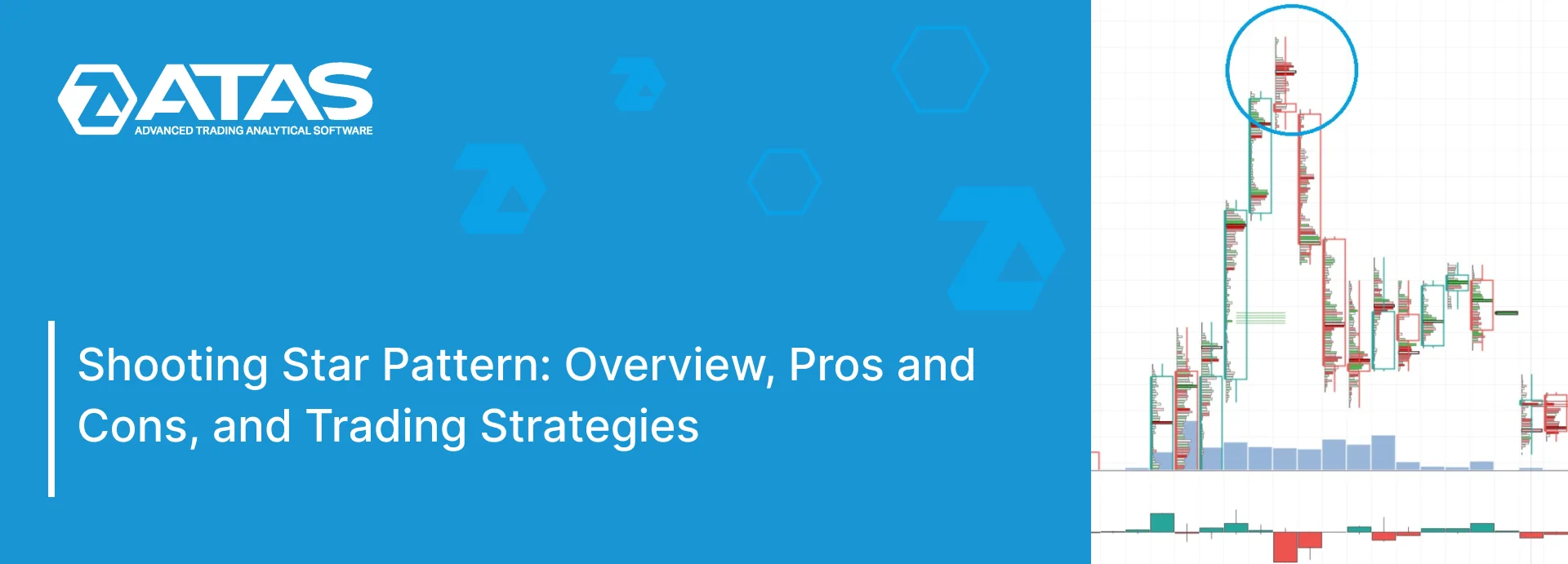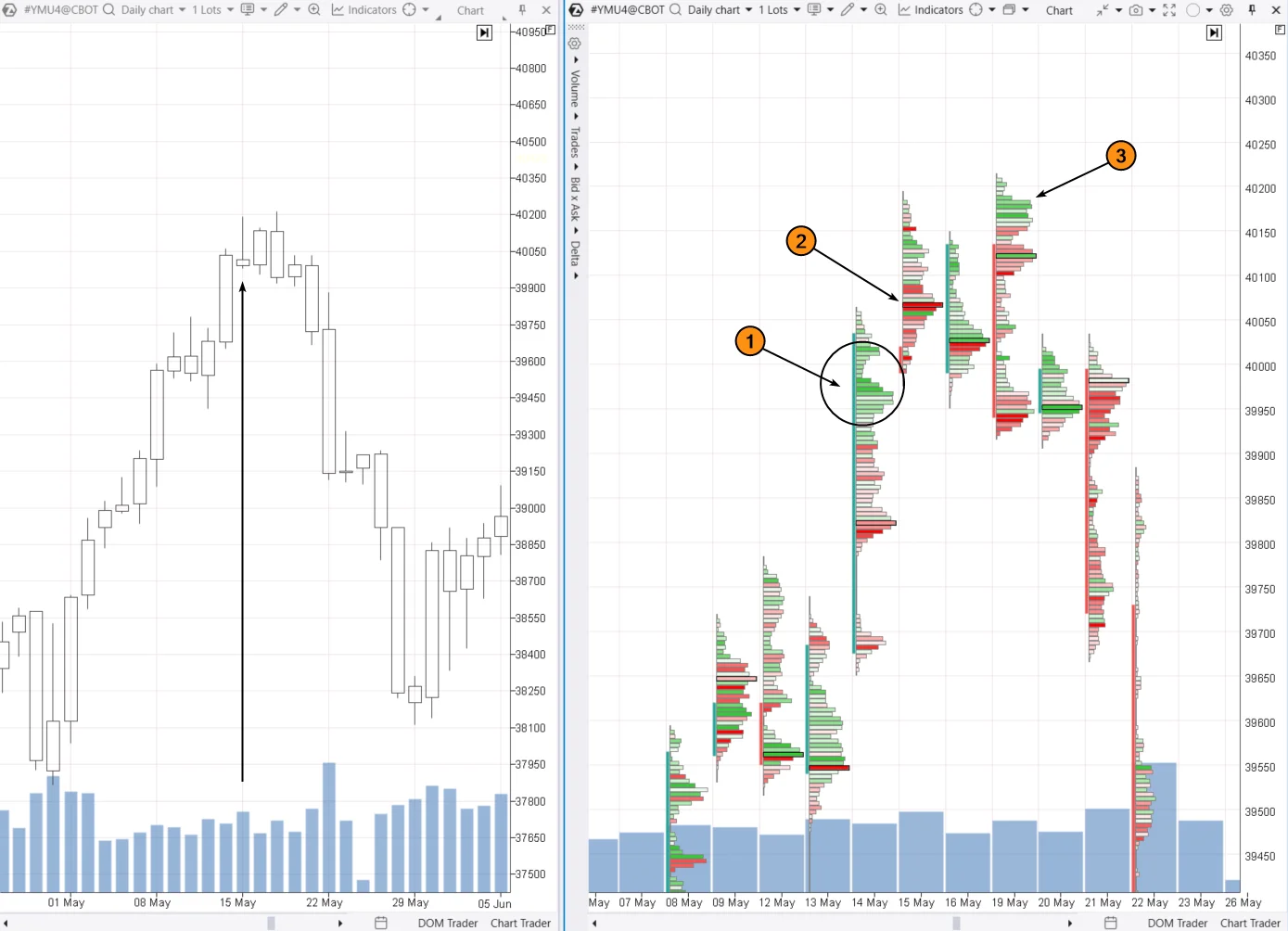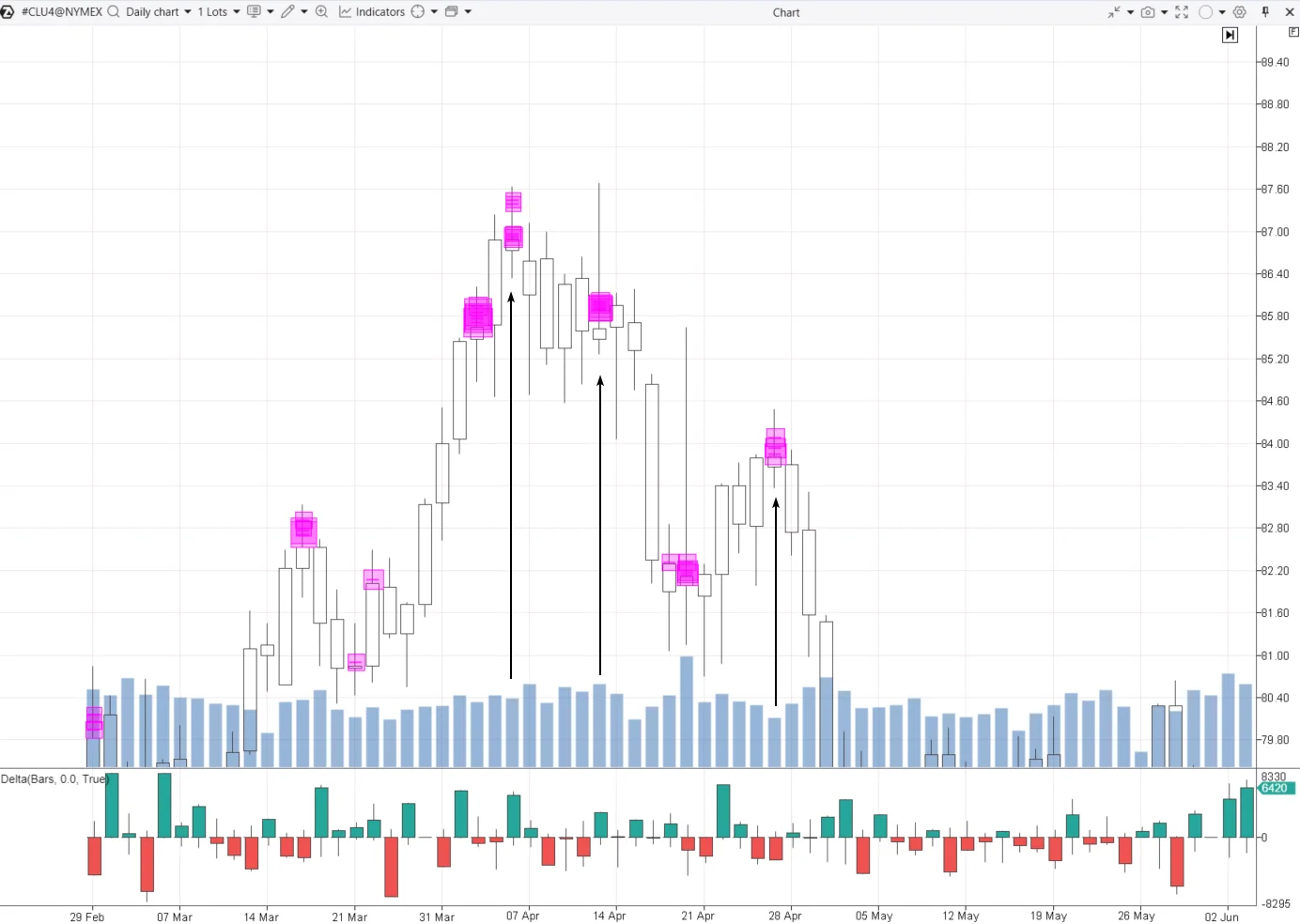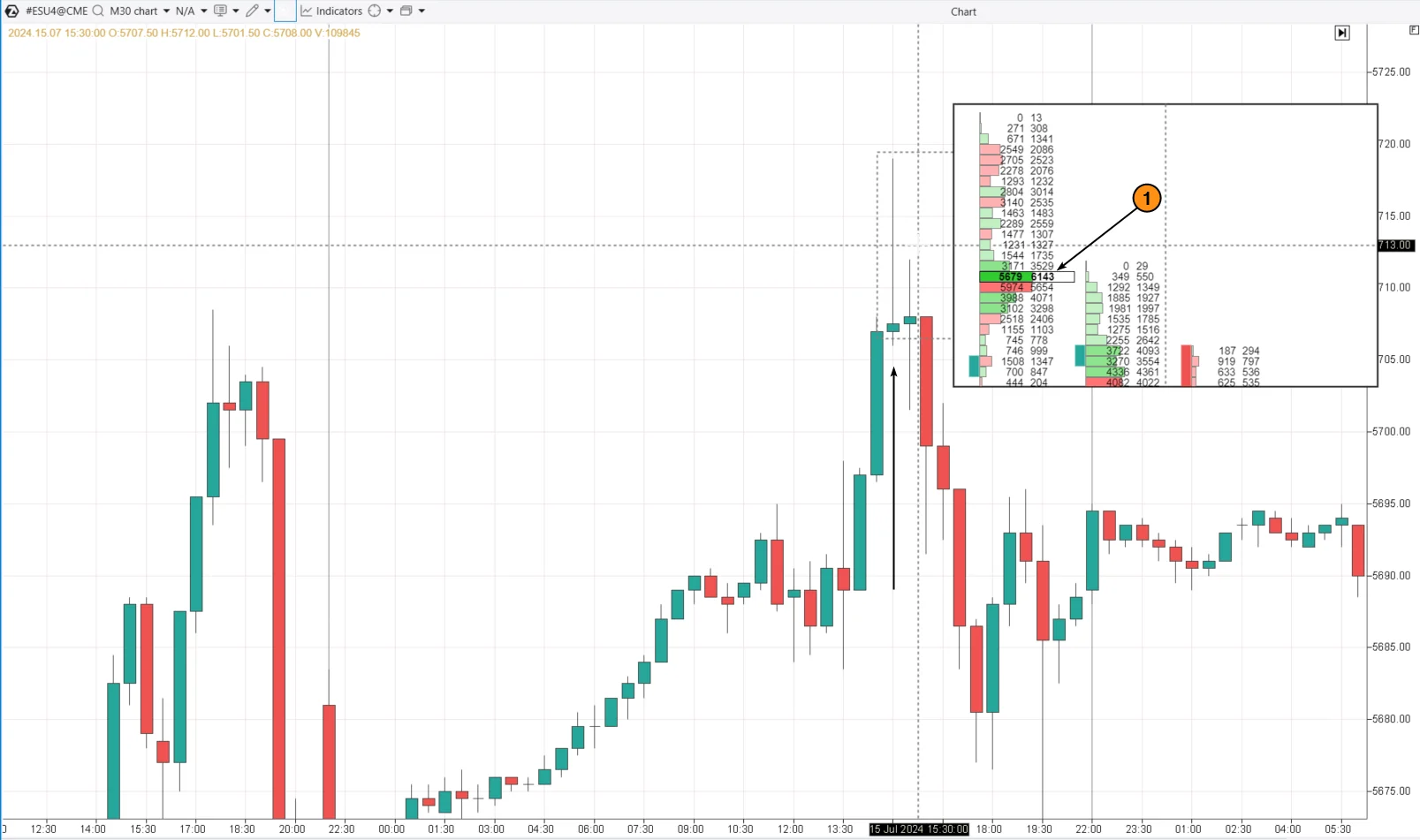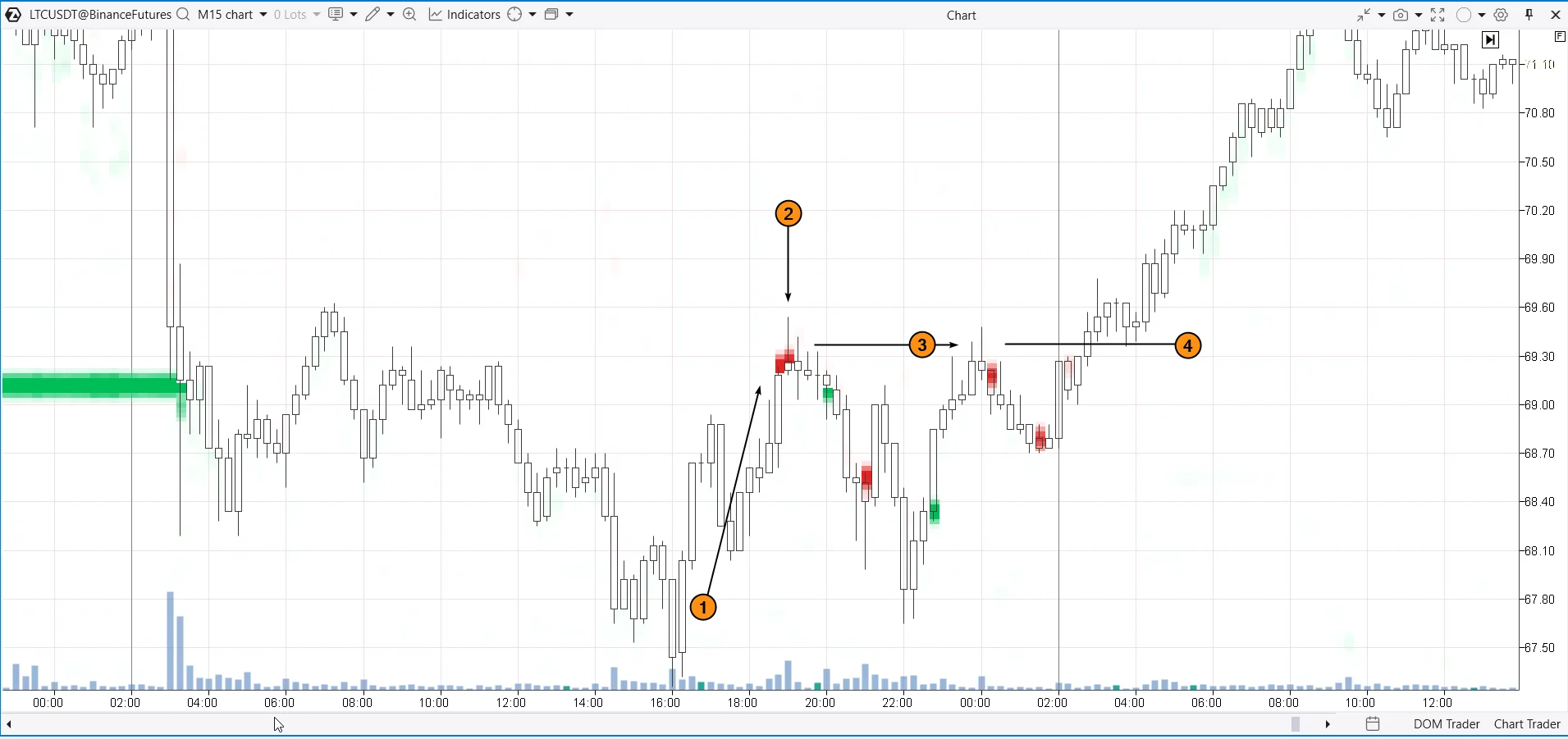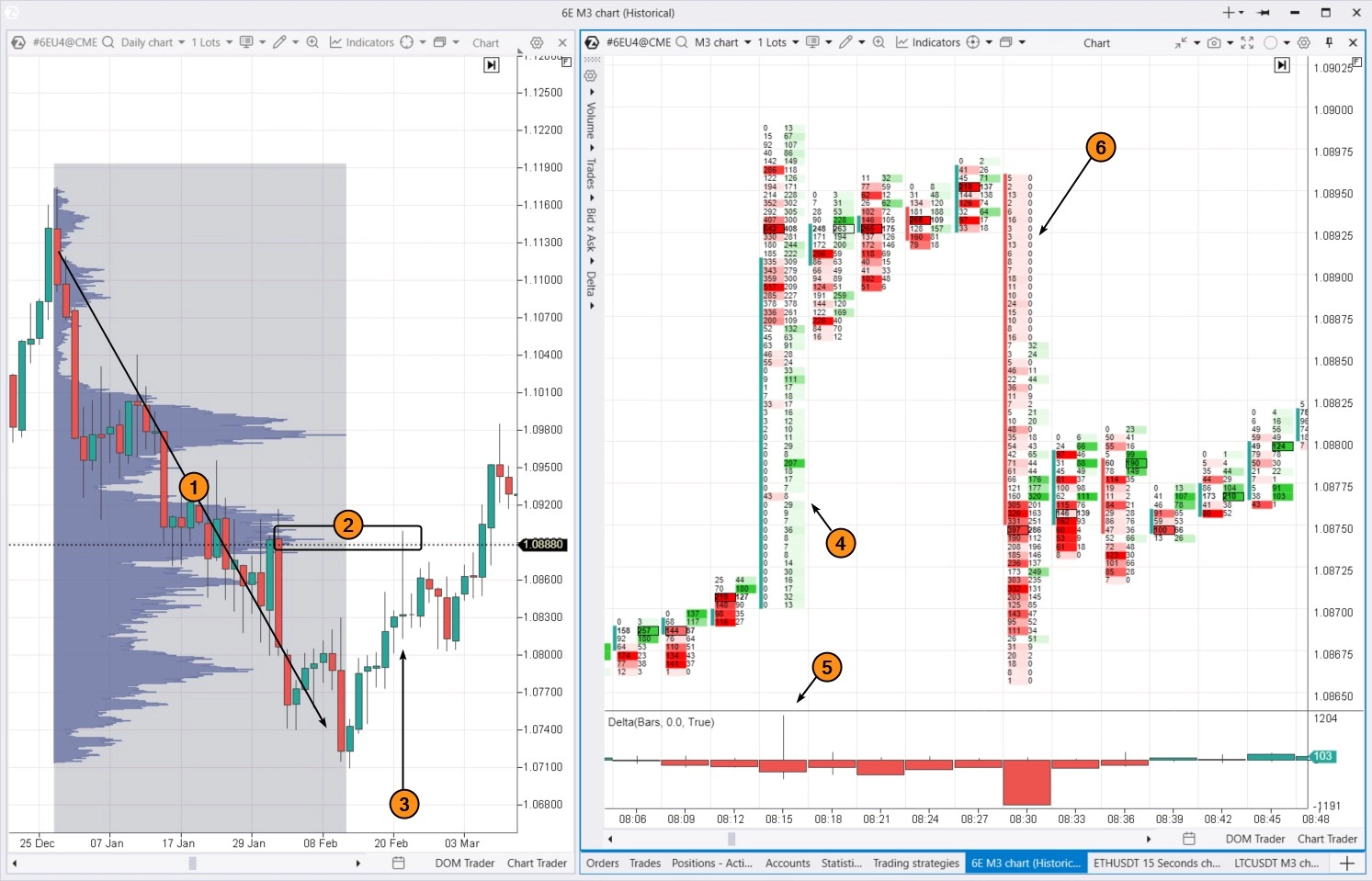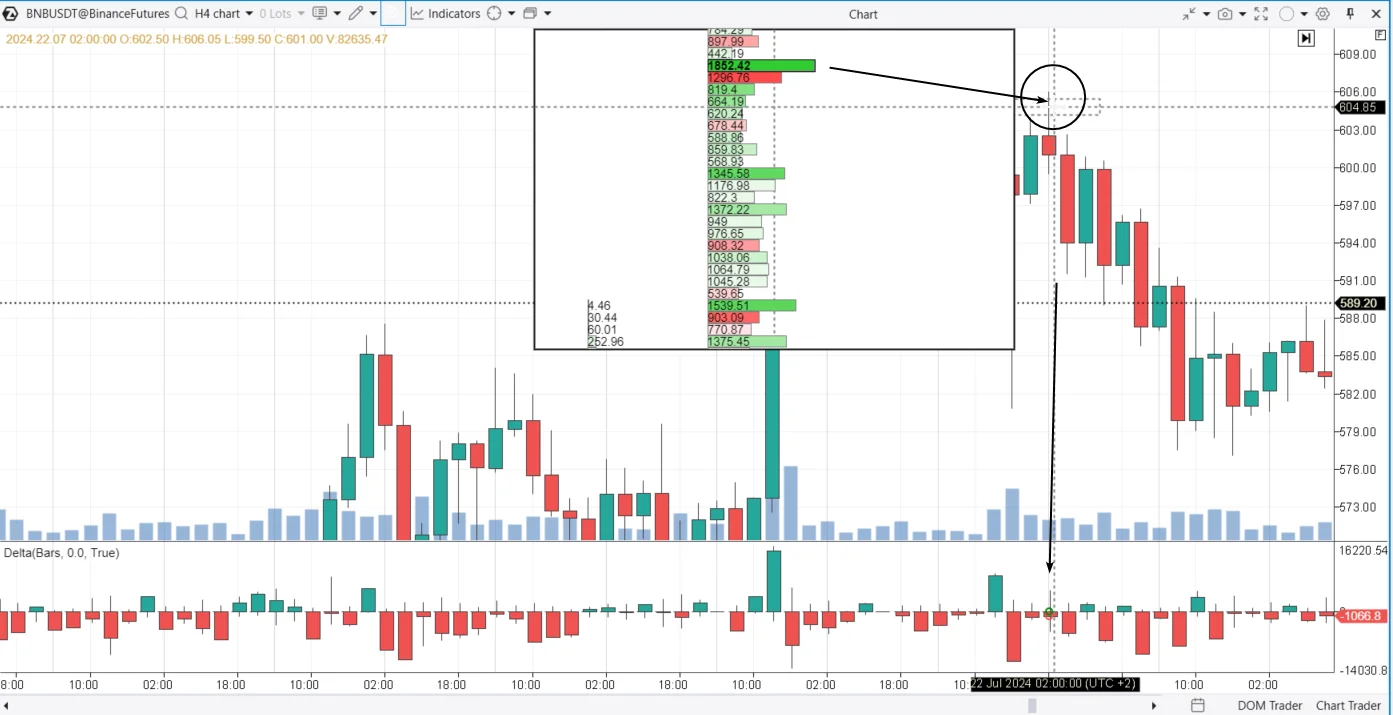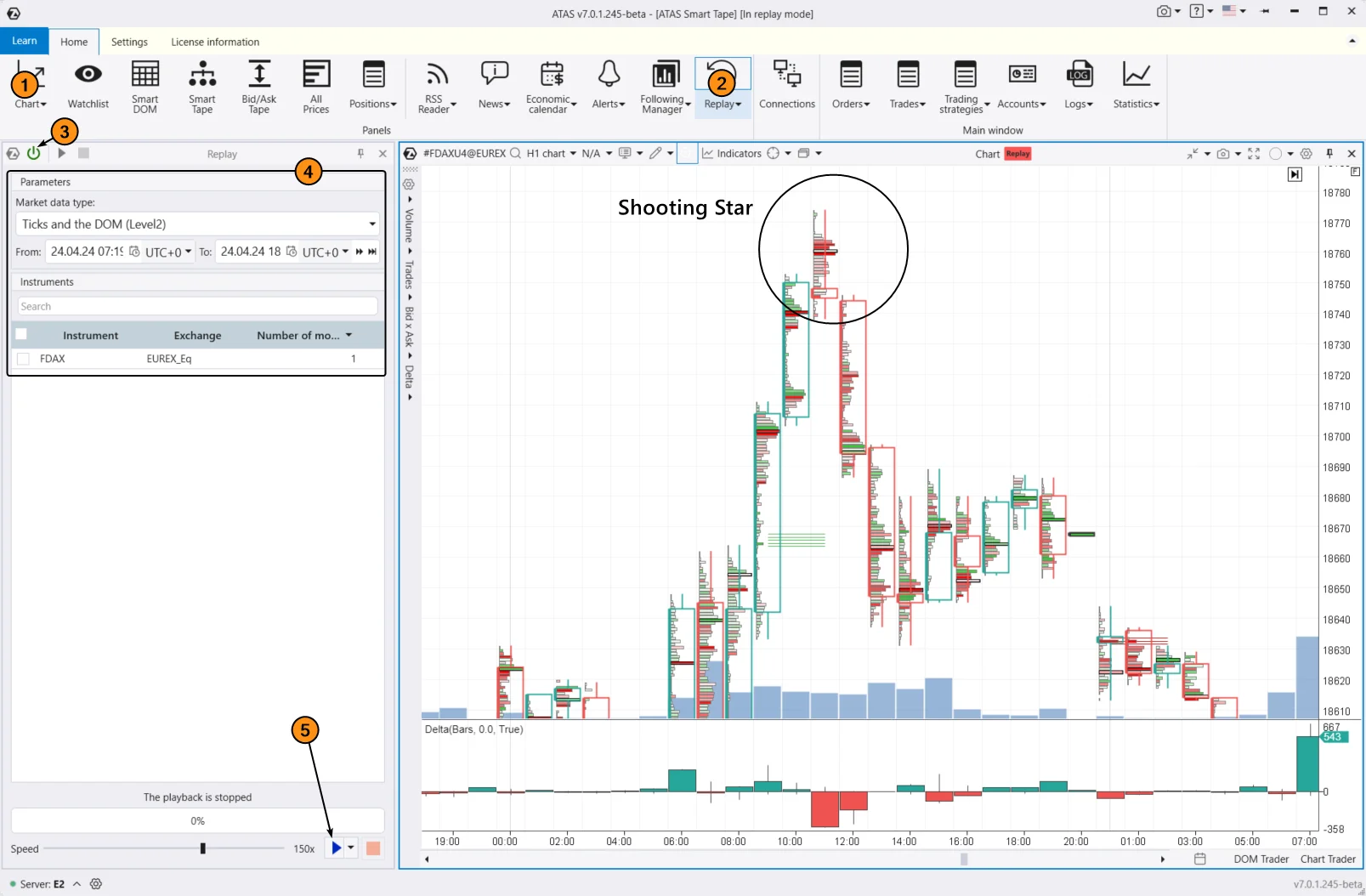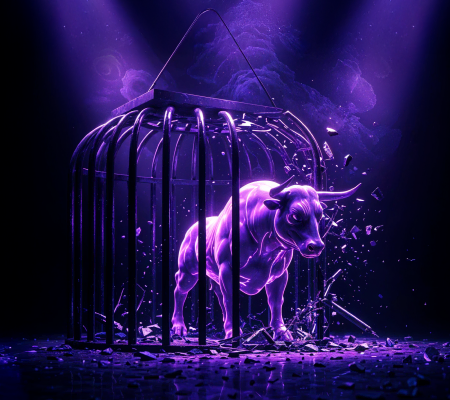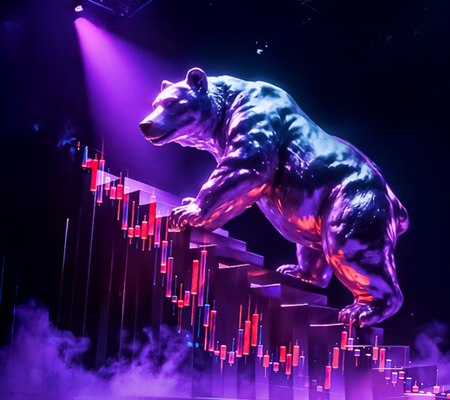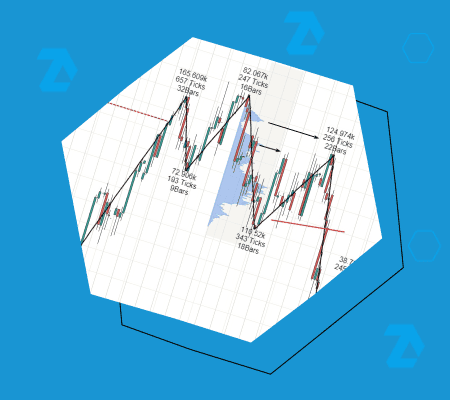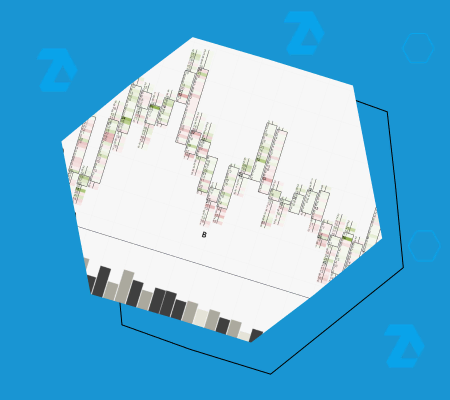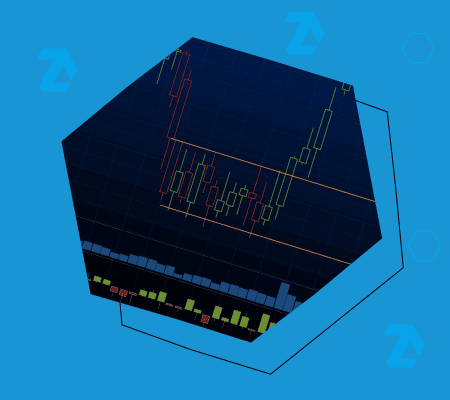Pros:
✔ Easy to spot on a chart — this pattern consists of just one candle. Although experts like Morris, Bulkowski, and Nison also discuss a two-candle version of the Shooting Star, which we will explore in more detail below;
✔ Enables you to enter a short position relatively close to the market’s peak.
Cons:
✘ Subjectivity. Traders might question whether the shadow is truly long enough, if the body is small enough, or if the preceding price increase is significant enough.
✘ No guarantee of a downward reversal. The Shooting Star pattern could be a short-term pullback from a resistance level that the market hits while continuing its upward trend.
✘ Timeframe variability. On a 30-minute chart, you might see a bearish engulfing pattern, while on an hourly chart, it could be a Shooting Star. But can you identify a bearish reversal on a 15-minute or 45-minute chart? Or on a 4-hour chart? The interpretation can vary depending on where the price is when the candle closes on the chosen timeframe. The timing factor can lead to different readings of the same market.
✘ Risks. Suppose you decide to open a short position after spotting the pattern. But where should you place the stop-loss? Above the pattern’s high? The risk could be too great if the Shooting Star has a long shadow.
✘ Rarity. CandleScanner analyzed over 2 million candles on daily S&P 500 stock charts and found that the chance of a Shooting Star appearing is only 2.7%.
How to Mitigate the Drawbacks of the Shooting Star Pattern
- Wait for confirmation from the next candle — it should be bearish.
- Trade from resistance levels.
- Pay attention to volumes — higher volumes during the formation of a Shooting Star make it a more reliable reversal signal.
- Consider the broader fundamental context.
The most effective way to enhance your strategy when trading this pattern is to use a cluster chart (or footprint). We will dive into how to use it with examples later on.

